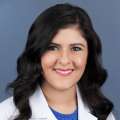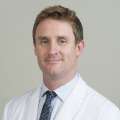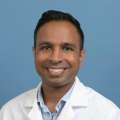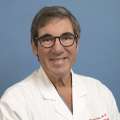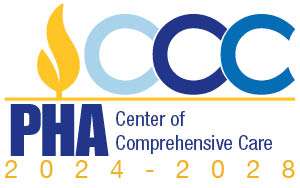Pulmonary Vascular Disease (PVD)
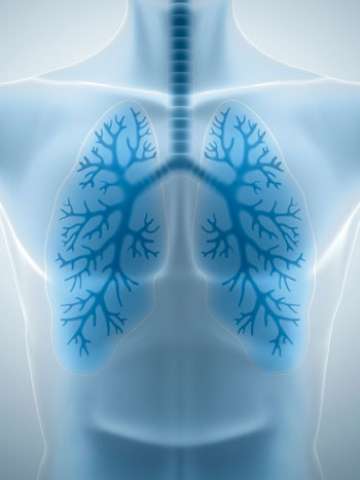
Why choose UCLA Health for pulmonary vascular disease care?
Doctors at UCLA Health diagnose and treat all types of pulmonary vascular disease (PVD), conditions that affect the blood vessels in the lungs. Our experts pioneer minimally invasive techniques and groundbreaking surgeries to treat these conditions. Highlights of our program include:
Highly trained specialists: At the UCLA Pulmonary Vascular Disease Program, we specialize in advanced treatments that aren’t available elsewhere. These treatments require a high level of skill from an experienced team.
Multispecialty team: Specialists in interventional radiology, cardiothoracic surgery, critical care medicine, pulmonology and cardiology work closely to coordinate your treatments. Our team approach allows us to deliver effective care.
Unmatched expertise: Our team is one of only a few in the country with experience diagnosing and treating chronic thromboembolic pulmonary hypertension (CTEPH), a rare type of pulmonary hypertension (high blood pressure in the lungs). People diagnosed with CTEPH come to us from around the world. We’re also one of the largest medical centers in the nation for treating pulmonary arterial hypertension (PAH), high blood pressure in the lungs that can cause the heart to enlarge.
Our areas of care
We use the most advanced technology to diagnose a range of pulmonary vascular conditions. Our renowned specialists meet regularly to discuss patient care and develop customized treatment plans for each patient. We offer:
Precise diagnostics
Using sophisticated imaging tests, we deliver a timely diagnosis and determine the best treatment plan for you. Some of the tests we use include:
Duplex ultrasound: This imaging technique helps your physician assess blood flow and evaluate blood vessels in the legs. Ultrasound uses high-frequency sound waves and a computer to create images of blood vessels, tissues and organs.
Echocardiogram (EKG): This painless test uses ultrasound technology to show images of the heart. Your doctor looks at the images to check your heart’s size and see how it’s working.
Imaging studies: Our experts use CT scans, chest X-rays and MRIs to create detailed pictures of the lungs, heart and blood vessels.
Pulmonary angiogram: Your physician threads a catheter (a thin, flexible tube) to your pulmonary artery (blood vessel that goes from the heart to the lungs). The doctor inserts dye through the catheter and into the artery to produce clear images. This test allows your physician to measure pressure in the artery, look for blood clots and see blockages.
Ventilation-perfusion scan (V/Q scan): For this test, your physician places a small amount of a radioactive dye in the lungs that helps produce clearer images. Your doctor then does a scan that shows how air moves through the lungs and looks for areas that aren’t receiving enough blood.
Individualized treatment plans for PVD
As leaders in innovative techniques, we deliver safe, effective treatments. Our experts individualize each treatment plan based on the type of disease, its severity and your overall health.
Your PVD care team may recommend medications, a minimally invasive procedure or open surgery. We carefully consider your well-being and work with you to determine the best way forward.
Pulmonary vascular diseases we treat
Pulmonary vascular diseases affect the blood vessels that go from the heart to the lungs. Untreated, these conditions can cause breathing difficulties, chest pain and heart failure. They can be fatal. We have experience treating:
Pulmonary embolism (PE): This life-threatening condition happens when a blood clot forms in a blood vessel somewhere in the body (usually in the leg) and travels to the lung. The blood clot, which is called deep vein thrombosis (DVT), travels to the lung. A blood clot in the lung blocks the flow of blood to the rest of the body.
Pulmonary arterial hypertension (PAH): High blood pressure in the lungs causes the right side of the heart to become enlarged. This life-threatening condition results in shortness of breath, fatigue and chest pain.
Chronic thromboembolic pulmonary hypertension (CTEPH): CTEPH is a type of pulmonary hypertension (high blood pressure in the lungs) that can develop after a pulmonary embolism. Symptoms include difficulty breathing, heart palpitations, chest pain and dizziness.
PVD treatments we offer
We specialize in advanced treatments for pulmonary vascular disease. With decades of experience treating these conditions, our highly skilled team members are international leaders in the field. Treatments may include:
Medications for pulmonary vascular disease
Your physician may recommend medications to control symptoms and help you feel better. You can take these medications by mouth, through a vein or through an infusion pump that delivers medication continuously.
Depending on the condition, you may need drugs that break up blood clots, thin your blood or relax muscles in your blood vessels. We work with you to determine the best option. Our team monitors your health so we can adjust medications if your needs change.
Minimally invasive procedures
As leaders in pulmonology, our specialists perform minimally invasive techniques to treat PVD. These procedures involve smaller incisions and less recovery time than open surgery. We specialize in:
Balloon pulmonary angioplasty (BPA): UCLA Health is one of only a few medical centers in the world to offer this treatment for CTEPH. This minimally invasive procedure uses a catheter (a long, thin tube) to dilate the pulmonary arteries. Dilation relieves pressure and improves blood flow.
Percutaneous thrombectomy: To treat an embolism (blockage in a blood vessel), we thread a catheter to the area. Guided by X-ray images, your physician either removes the embolism, breaks it up or dissolves it.
Vena cava filter: Using a catheter, we place a small metal device in the vena cava (the large blood vessel that returns blood from the body to the heart). The device filters out blood clots before they can travel to the lungs.
Surgery for pulmonary embolism and pulmonary hypertension
If you need surgery to treat pulmonary vascular disease, our experts lead the nation in advanced techniques. We are highly skilled at:
Pulmonary thromboendarterectomy (PTE) surgery: This procedure treats CTEPH by removing blood clots from arteries in the lung. Untreated, these blood clots can form scars and cause breathing problems. Our experts remove the clots during this delicate surgery, which can cure CTEPH.
Pulmonary embolectomy: During a pulmonary embolectomy, we remove large pulmonary embolisms and those that can’t be treated with other methods.
Lung transplant: The UCLA Health Lung Transplant Program is one of the most successful in the nation. We perform more lung transplants than most medical centers in the United States. Learn more about the UCLA Health Lung Transplant Program.
Meet our team
Our team includes pulmonologists, interventional radiologists, cardiologists and cardiothoracic surgeons. We work closely with experts across UCLA Health to deliver effective, comprehensive care.
Pulmonary and Critical Care Medicine
Pulmonary Vascular Disease Fellow

Pulmonary and Critical Care Medicine Fellows



Nurse Practitioners

Clinical Nurse Specialist
Pharmacy Team


Licensed Vocational Nurse

Interventional Radiology
Cardiothoracic Surgery

Research Team



Administrative Team




Contact us
At UCLA Health, you receive world-class care from a team of experts in pulmonary vascular disease. Call to connect with a specialist.
Find your care
At UCLA Health, you receive world-class care from a team of experts in pulmonary vascular disease. Call to connect with a specialist.


